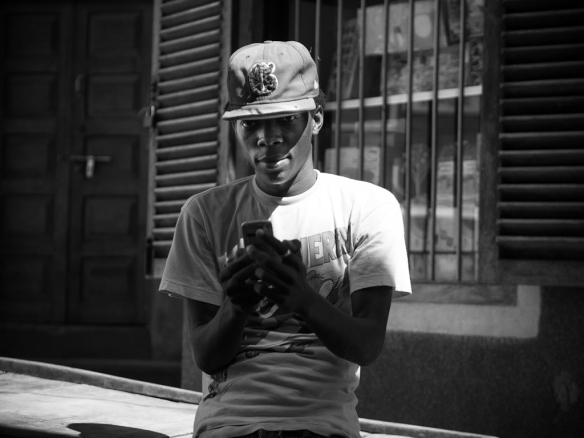When we travel, our eyes are a opened a little bit wider. This is the perfect time to shoot street photography. Good street photography is all about people. But, photographing people in a new culture isn’t always easy. I’ve just returned from shooting in Uganda and Tanzania. Africa is a wonderful place to shoot street photography but you need to keep your wits about you.
So, how can use the techniques from street photography to make your travel photography better?
Tell a story
Stop and talk to the people you are photographing. Who are they, where were they born, what football team do they support? Get to know the people you are shooting and learn their story so you can tell it through your photos. This will be the biggest change for most tourists. It will challenge you to become more of an extrovert. You will have to deal with the occasional rebuff. Not everyone will be happy about you taking their photo (watch out in Central America and China). But you can bust through the toughest cultural barriers with the right mix of respect, smiling, body language and politeness.
You also need a viewpoint on what you are trying to convey. Are you amazed by the Arabian influence in Zanzibar? The dignity in the slums of Kampala? Or the intricacies of village life on the border with Rwanda? Then convey your viewpoint through your photos.
Get closer
Most travel photos are taken from a long way away. Imagine the generic shot of the Eiffel Tower or the Sydney Opera House. If you’re shooting in an amazing location like Africa, don’t let your bad old travel photography habits hold you back. Instead, get closer.
By getting closer you will capture more emotion and more detail. The field of view changes so that your viewer feels that they are closer to the action. I’ve found that the perfect pairing is a 90mm portrait lens on my primary shooter (GF2) and a travel zoom compact camera (TZ30) in my back pocket for wide or long shots.
Use light
The biggest difference between a travel photo and a street photo is light. Become obsessed with shadows, times of the day (look for the golden hour before sunset) and moments when your subject is facing sideways across the light. You can take a bald record of your travels in any light but a street photo requires some depth of lighting.
To get the most out of the light it’s nice to have a slightly better camera. A Micro Four Thirds or a mini-SLR is a good compromise for street photography in the developing world. They are small enough to travel well and keep a low profile, but large enough to take a credible picture.
Safety
People ask me a lot about safety doing street photography in the developing world. Those people are not normally street photographers. If you’re a nervous tourist and you suddenly jerk out a flashy compact camera and wave it in someone’s face, then you might be inviting trouble. Either from your subject, or the tough guy in an the alleyway.
If you dress less like a tourist (somber colours), carry a beat-up looking camera, have your camera already in your hands ready to use and have fun with people, then you’ll eventually create that street photographer’s invisibility cloak that only comes from experience. Even so, common sense applies and you’re best to do a recce in an area for a few hours before you start shooting. This allows you to relax, but also to spot any dangerous areas or characters.
Shooting in a street photography style will bring a whole new dimension to your travel photography. Especially in Africa where there are so many nuanced stories to tell.






Still not sure that I’d be comfortable taking photos up close of people.
Really interesting article. What an amazing trip to do and opportunity to take some pictures that are a world apart from London! These pictures have left me asking a bunch of questions: why does that guy have two cellphones? and why is that guy dragging a stingray!? Nice work Peter!